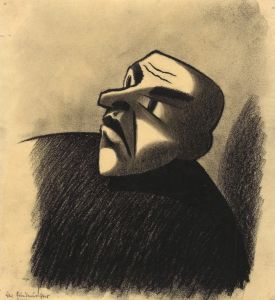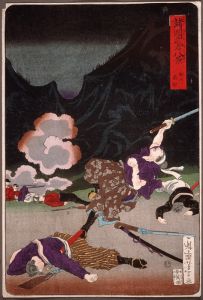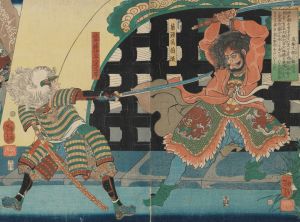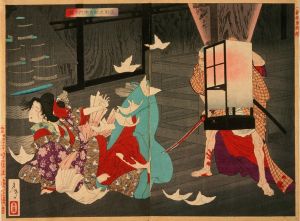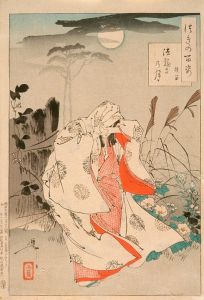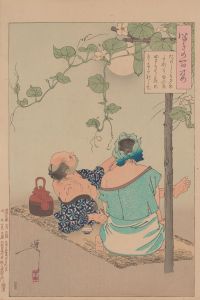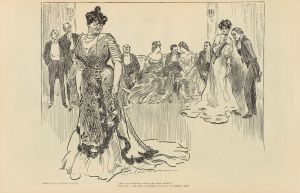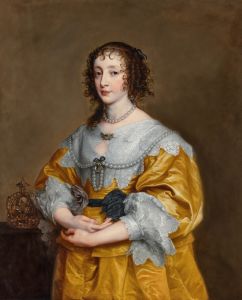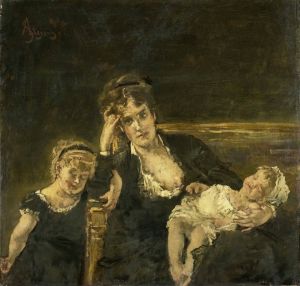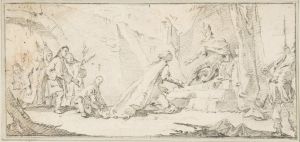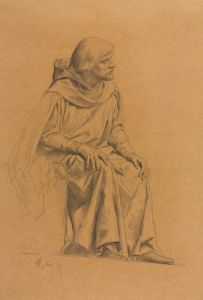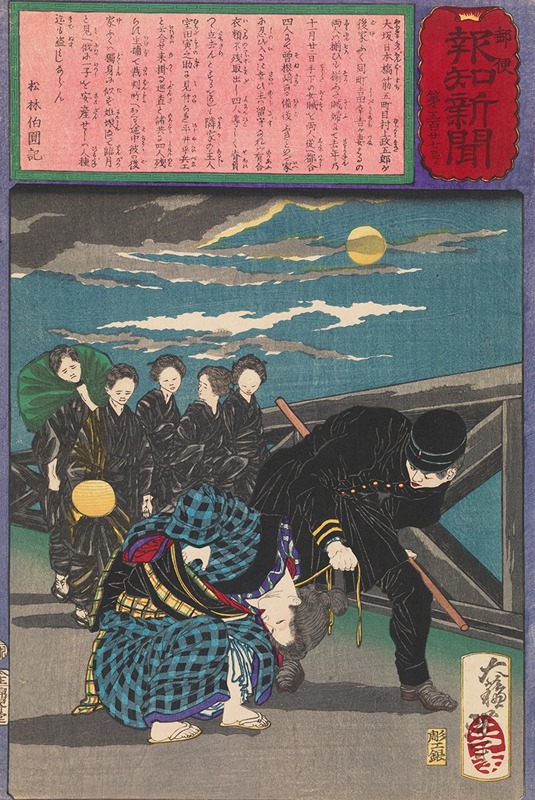
The Widow Fuku Giving Birth on the Way to Court for Arraignment for Theft
A hand-painted replica of Tsukioka Yoshitoshi’s masterpiece The Widow Fuku Giving Birth on the Way to Court for Arraignment for Theft, meticulously crafted by professional artists to capture the true essence of the original. Each piece is created with museum-quality canvas and rare mineral pigments, carefully painted by experienced artists with delicate brushstrokes and rich, layered colors to perfectly recreate the texture of the original artwork. Unlike machine-printed reproductions, this hand-painted version brings the painting to life, infused with the artist’s emotions and skill in every stroke. Whether for personal collection or home decoration, it instantly elevates the artistic atmosphere of any space.
Tsukioka Yoshitoshi (1839–1892) was a prominent Japanese artist known for his work in the ukiyo-e genre, a style of woodblock printing and painting that flourished in Japan from the 17th through the 19th centuries. Yoshitoshi is often celebrated for his innovative approach to traditional subjects and his ability to capture the complexities of human emotion and the supernatural. One of his notable works is "The Widow Fuku Giving Birth on the Way to Court for Arraignment for Theft," which is part of his series "New Forms of Thirty-Six Ghosts" (Shinkei Sanjūrokkaisen).
This particular artwork, created in 1889, depicts a dramatic and poignant scene involving a woman named Fuku. The narrative behind the image is rooted in a story of hardship and resilience. Fuku, a widow, is portrayed in the midst of giving birth while on her way to court, where she is to be arraigned for theft. The composition captures the tension and urgency of the moment, highlighting Yoshitoshi's skill in conveying intense emotional states through his art.
Yoshitoshi's work often explored themes of suffering, redemption, and the supernatural, and this piece is no exception. The image of Fuku giving birth under such dire circumstances can be seen as a commentary on the struggles faced by women and the lower classes in Meiji-era Japan. It reflects the societal challenges of the time, including poverty and the harsh realities of the legal system.
The series "New Forms of Thirty-Six Ghosts" to which this work belongs is known for its exploration of ghostly and supernatural themes, often drawing on traditional Japanese folklore and legends. Yoshitoshi's interest in these themes is evident in his ability to blend the real and the fantastical, creating images that are both haunting and deeply human.
Yoshitoshi's style is characterized by his bold use of color and dynamic compositions. In "The Widow Fuku Giving Birth," he employs these techniques to draw the viewer's attention to the central figure of Fuku, emphasizing her strength and vulnerability. The use of light and shadow adds to the dramatic effect, enhancing the emotional impact of the scene.
Throughout his career, Yoshitoshi faced numerous personal and professional challenges, including periods of mental illness and financial difficulty. Despite these struggles, he remained a prolific and influential artist, leaving behind a legacy that continues to be celebrated today. His work is often seen as a bridge between traditional ukiyo-e and the modern era, reflecting the changing cultural landscape of Japan during the late 19th century.
In summary, "The Widow Fuku Giving Birth on the Way to Court for Arraignment for Theft" is a powerful example of Tsukioka Yoshitoshi's ability to capture the complexities of human experience through his art. It stands as a testament to his skill as an artist and his deep engagement with the social and cultural issues of his time.





